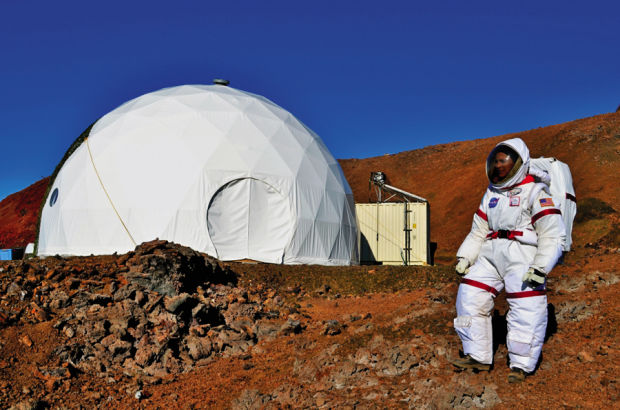HONOLULU — The countdown has begun. Six researchers who have spent more than 100 days inside a remote habitat to simulate a long-duration space journey are finally returning to Earth in a few days. About 700 applicants vied for six
HONOLULU — The countdown has begun.
Six researchers who have spent more than 100 days inside a remote habitat to simulate a long-duration space journey are finally returning to Earth in a few days.
About 700 applicants vied for six spots in the Hawaii Space Exploration Analog and Simulation mission, which began in April and will conclude Aug. 13, according to the University of Hawaii.
These Earth-based researchers have been living and working like astronauts, including suiting up in space gear whenever they venture outside a simulated Martian base and cooking meals from a specific list of dehydrated and shelf-stable food items.
The HI-SEAS study, led by Cornell University and UH Manoa, is analyzing new types of food and novel food preparation strategies to keep astronauts well-nourished for space exploration. The work is funded by the NASA Human Research Program.
The food study is designed to simulate the living and working experience of astronauts on a real planetary mission and to compare two types of food systems — crew-cooked vs. pre-prepared — as thoroughly as possible in the context of a four-month Mars analog mission.
“One possible solution to handle menu fatigue would be to allow astronauts to cook their own food instead of eating pre-prepared food day after day,” said crew member Angelo Vermeulen, one of the six researchers inside the HI-SEAS habitat, on the Big Island.
At the end of the study, researchers will announce the winners of the HI-SEAS recipe contest. Winning recipes in a number of categories will be featured on the HI-SEAS website.
The public is invited to follow along with the “Meals for Mars” videos, researcher blogs and test recipes featured at hi-seas.org, on Twitter (@HI_SEAS) or Facebook.



